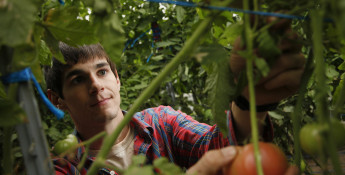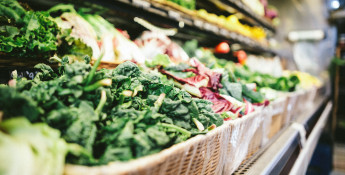By Hannah Becker on September 13, 2018
Feeding America: The Farm Bill’s Nutrition Programs

What do you think of when you hear the term “farm bill?”
Agriculture equipment?
Crop insurance?
Farm subsidies?
What if I told you the majority of the farm bill’s $100 billion annual budget goes toward alleviating hunger for American families all across the United States?
The farm bill involves a lot more than farm-related programs. It’s an essential economic program that’s utilized in nearly every community across the nation, providing much-needed nutrition assistance to more than 40 million Americans in urban, suburban and rural areas alike.
Farm bill or food bill?
Calling this important piece of legislation the “farm bill” is a misnomer, as its programs extend well beyond the world of agriculture.
A more accurate name for the farm bill may be something like the “food bill,” given that more than 80 percent of the farm bill funds go toward food-focused programs like Supplemental Nutrition Assistance Program (SNAP) and The Emergency Food Assistance Program (TEFAP).
While the farm bill was originally part of FDR’s New Deal, designed to help stabilize the American economy during the Great Depression, it’s evolved into a multi-faceted policy that’s designed to help all Americans, on and off the farm.
Who does the farm bill feed?
Nutrition-focused programs developed through the farm bill help provide food for millions of Americans.
One in eight Americans cannot afford food, with most of the food insecurity occurring in declining, rural communities. In Kansas, more than 230,000 residents were receiving SNAP assistance in 2017. Three out of four Kansas households receiving SNAP assistance had children.
For more than 40 million Americans, participation in the farm bill’s SNAP is the difference between going hungry or having enough food for their families. The majority of households receiving SNAP assistance include children, seniors or someone living with a disability (including more than a million veterans).
How does the farm bill affect you?
Even if your family doesn’t receive SNAP benefits for food, the farm bill’s many programs are hard at work to keep your food bill affordable.
The farm bill helps keep the agriculture market stable, preventing drastic price increases in food commodities like milk or meat after a natural disaster or market upset. In agriculture, the farm bill is like a big market safety net that helps the American food system feed millions.
Additional farm bill programs include school lunches, international trade and organic food production incentives. While many American consumers may not be aware of all the ways the farm bill impacts their daily lives, its economic programs have been hard at work for nearly a century.
The future of the farm bill’s nutrition programs
Every four to five years, elected officials are tasked with renewing the farm bill budget and provisions.
This year, an updated version of the farm bill has been proposed, that includes revised work requirements and drug testing from SNAP recipients. Legislators and lobbyists have suggested updating the eligibility process via digital methods and expanding the program to include more nutritious food products.
The 2014 farm bill expires at the end of September, and an updated version will require agreement among both houses. As with many legislative policies sporting long tenures, the farm bill’s periodic modifications are required to ensure continued support of American families across generations.





